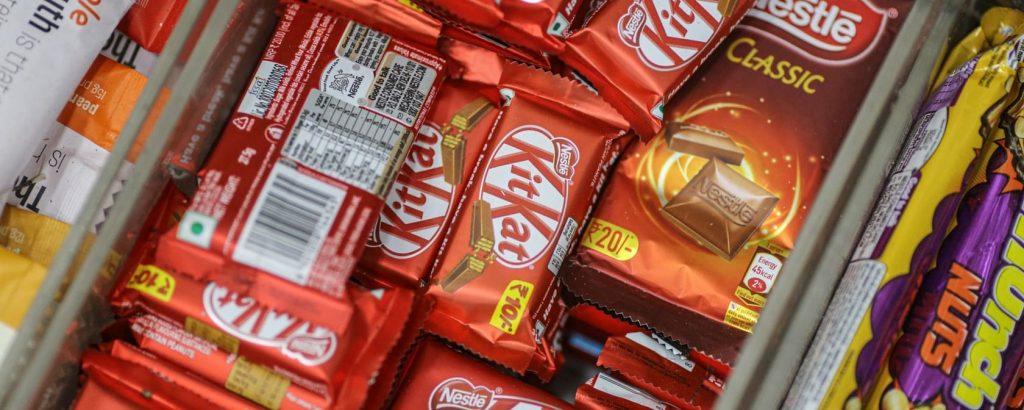Analysts were divided as Nestle India Ltd. reported a mixed set of numbers in the third quarter of calendar year 2021, with the management flagging rising input cost concerns. Maintains ‘buy’ rating with a target price of Rs 22,000 apiece.
The stock has significantly underperformed benchmark indices in recent times. Nestle’s valuations have become more favorable on a risk-adjusted basis.
It offers safe harbour in this VUCA (volatility, uncertainty, complexity and ambiguity) world with earnings resilience (12% earnings per share compound annual growth rate over CY19-23) on high share of essential products (>80%), aggression in innovation of existing categories, new product development, and increasing distribution network, particularly in rural areas.
Domestic business momentum sustained with the fifth consecutive quarter of double-digit revenue growth, but exports business remained volatile over the past few quarters registering a flat growth in Q3 versus 10% growth last year.
Going forward, Nestle to be in a position to manage increasing raw materials index in the medium term via superior product mix and price increases.
Retains ‘accumulate’ rating on stock, but with a higher target price of Rs 19,501 on a discounted cash flow basis.
It estimates 13.6% profit after tax compound annual growth rate over CY21-23. Long term outlook to be intact but it expects back-ended returns given rich valuations of 63.8x Sept. 23 earnings per share.
Near-term margin pressure to sustain given inflation in palm oil, coffee, wheat and liquid milk.
Post the second wave of Covid-19, sustained improvement was seen across channels and strong growth witnessed across key brands, except Maggi, aided by promotions, penetration and distribution
Price outlook of key commodities like wheat, coffee, and edible oils remains firm. In addition, rising cost of packaging materials, fuel and transportation costs are likely to keep margins under pressure in the near term despite focus on cost optimisation.
Maintains ‘hold’ rating on the stock.
Weaker-than-expected margins make the brokerage cut CY21-23E earnings per share by 5%.
Growth trends remain steady, but efforts in new categories and innovations need to accelerate to boost growth ahead of peers.
Valuations at 57x CY23E EPS appear rich given muted earnings growth.
E-commerce sales continue on an upward trajectory, and organised trade witnessed a turnaround with strong growth in mid-twenties (vs subdued performance in second quarter of CY21), primarily led by coffee and confectionery.
With input prices expected to remain high, we have trimmed our operating margin assumptions. We remain optimistic – estimate a 50 basis points decline in CY21 and a 200 basis points gain in CY22-23.
Maintains ‘buy’ with a revised target price of Rs 22,100.
Key risks include competition from new entrants. ITC and Patanjali are key aggressive players in the noodles category.
Nestle has launched premium variants in various categories such as chocolates, noodles, ketchup and dairy products, which could hit margin, in case they do not click in the market.
Overall, the company with established brands across food categories, is expected to be a major beneficiary of rising income levels, urbanisation and changing lifestyle.
On the margin front, we expect inflation going forward.
The company’s new strategy — top line and market share focus — is encouraging. Nestle’s focus on higher innovation and premiumisation is likely to boost volume-led growth.
Retains ‘hold’ rating on the stock.
It slightly cuts FY22 earnings per share forecast by 3% due to slight moderation in gross margins.
The management has focused only on cost inflation in its outlook which is a headwind and poses margin risk in the next few quarters.
In Q3, gross margins were lower than estimates and were down to a 17-quarter low — a disappointment although cost savings somewhat helped at the Ebitda level.

















